Aedas dumps UK business to focus on "high-density urban high-rise"
News: one of the world's biggest architecture practices has split in two so it can focus on bringing Asian-style high-density urban design to Seattle, New York, LA and London (+ interview).
Aedas, the world's fifth-largest architecture firm, has separated into two businesses, with its eight UK offices and the offices in Russia, Poland and Kazakhstan relaunching under the new brand name AHR.
Meanwhile its 13 offices in China, South-East Asia, the Middle East and the US, plus a new London office, will continue under the Aedas brand, and will focus on high-density developments in major world cities.
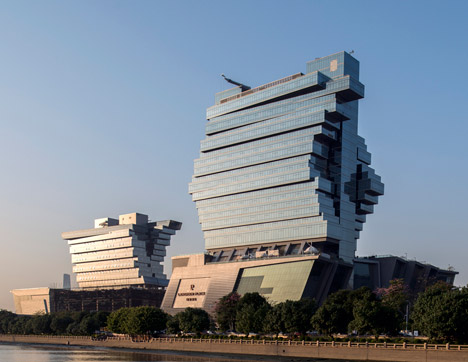
Aedas founder Keith Griffiths told Dezeen that the move reflected the way property development was becoming a global industry.
Aedas is hoping to build on existing relationships with Asian developers as they move into building major projects in the west – especially in London.
"I think everyone can see that developers have gone international, that you've got [Chinese developers] Greenland and Vanke coming in to London in the same way as you have [UK developer] Grosvenor going to Asia," said Griffiths. "This internationalisation is going to increase."

The emerging global market is leading to demand for a new type of large-scale, high-density development in major cities, which Aedas wants to serve, Griffiths said.
"The cities that were relevant and still are relevant are the capital cities," said Griffiths. "In particular London, Beijing, Singapore, Shanghai and Hong Kong. And now emerging to the market, Seattle with the growth driven particularly by Amazon. LA will shortly follow and New York. These cities, if they're not already doing it, will shortly be doing it because of the cross-fertilisation of developers."
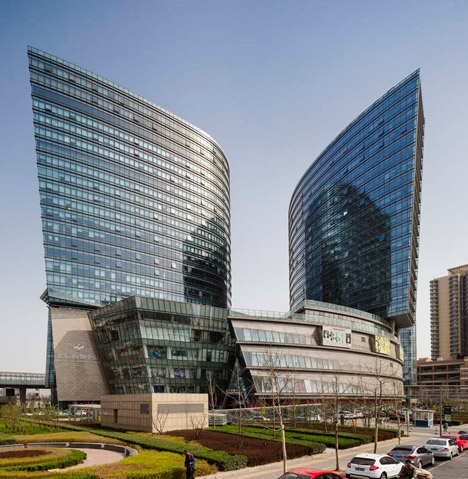
"When these developers go into London, they're not looking to do small-scale, medium-density developments," Griffifths added. "They're only used to doing high-rise, high-density. That's all they can do and that's all they're interested in doing."
Griffiths described these massive mixed-use developments as a "unique and appropriate solution" for rapid growth in regions like Asia and South America, as well as in established cities like London that are struggling to accommodate increasing numbers of residents and workers.
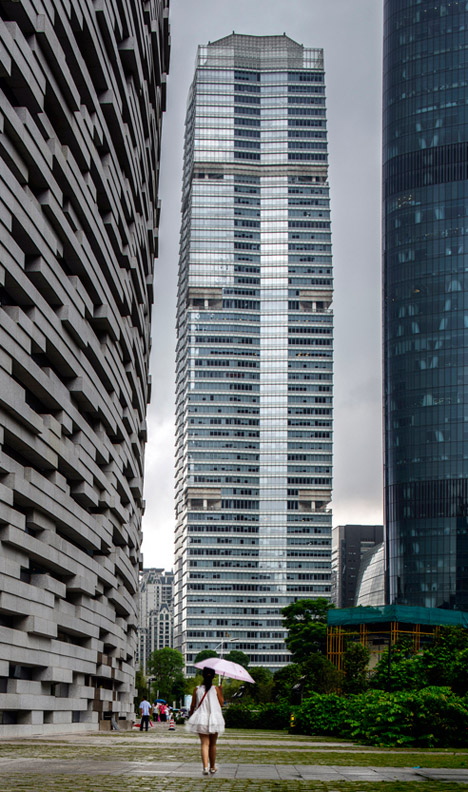
By contrast regional UK cities, as well as cities such as Moscow and Warsaw, are not attracting such large-scale developments. These markets will be served by the newly demerged AHR brand.
"It's going to be a lot easier to take chunks of land at transport interchanges and develop this at high density than it would be to spread medium density across the entire city. It's easier to upgrade infrastructure in one place that to do it all over," he said.
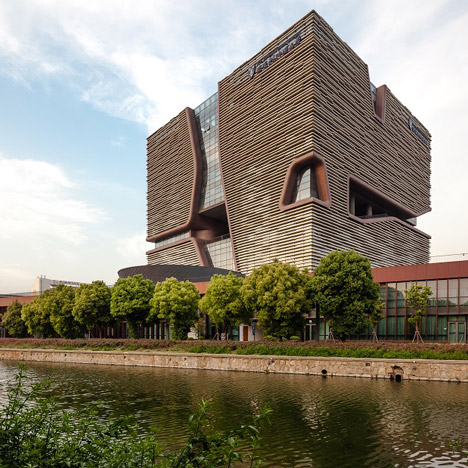
Aedas was formed in 2002 by the merger of Asia-based LPT and UK business AHR. In 2013 the firm had a turnover of £36 million.
The new company will remain one of the five largest architecture companies in the world with over 1,400 staff, despite losing AHR's 450 employees in the split, Griffiths added.
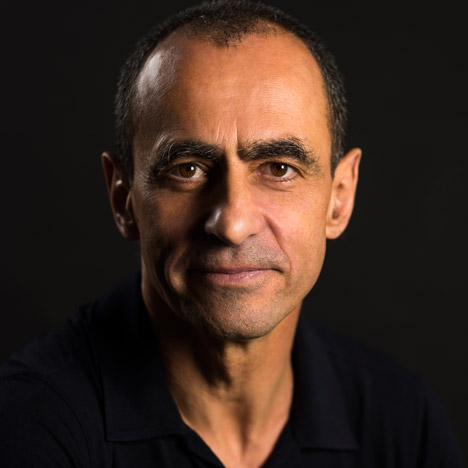
Read an edited transcript of our interview with Keith Griffiths:
Anna Winston: Can you explain a little bit about how you got to the stage where you wanted to split the company?
Keith Griffiths: Aedas is an international design company that specialises in large-scale, high-density developments, infrastructure, mixed commercial, residential. We have a unique approach – we're local and global. So we have an international design approach with a local embedment and understanding of the culture of the city and the economy we are designing for.
We designed the structure of the company back in 2000, to fit what we saw was an emergent international developer community. In 2000 it wasn't very obvious, but now I think everyone can see that developers have gone international, that you've got Greenland and Vanke coming in to London in the same way as you have Grosvenor going to Asia. This internationalisation is going to increase.
We needed to design a company that would meet a requirement to design very large-scale projects with infrastructure, retail, offices, hotels, apartments – new communities. These are quite large developments, usually around five to 10 million square foot – which is huge – that house large numbers of people, doing a lot of commerce, with a lot of transport involved. So a very unique and a very different type of design problem.
The early stages of that could be seen in Asia. We foresaw that this would spread out across the world because it was such a unique and appropriate solution, not just for an emergent economy but also for an established economy such as London which is attempting to urbanise within an existing framework. It's going to be a lot easier to take chunks of land at transport interchanges and develop this at high density than it would be to spread medium density across the entire city. It's easier to upgrade infrastructure in one place that to do it all over.
This American model of doing a design remotely, fly it into a country and dump it is not going to work in sophisticated economies. It's okay for Canary Wharf where a bunch of American bankers wanted to take their architects with them and so you've got the KPF, SOM syndrome, but it's not okay when you're trying to design a high-density infill to an established city or to an emerging major city in say an Asian economy. There's a huge need to understand the localness, the culture and the community and the difficulties of those particular cities, hence we established our offices in those particular cities.
Anna Winston: So what's changed?
Keith Griffiths: First of all a number of the cities that we were operating in in the UK were not appropriate for our model. They had no need to densify. Glasgow, Huddersfield, Shrewsbury, Leeds, Manchester have no intention to and no need to densify. Neither do they have any aspirations to build out one million to 10 million square foot projects. Well I hope they don't. A lot of our specialities, skills and expertise were irrelevant to those cities. And to those cities I would add Warsaw, Kazakhstan and Moscow because they also are not players in that market.
The cities that were relevant and still are relevant are the capital cities. In particular London, Beijing, Singapore, Shanghai and Hong Kong. And now emerging to the market, Seattle with the growth driven particularly by Amazon. LA will shortly follow and New York. These cities, if they're not already doing it, will shortly be doing it because of the cross-fertilisation of developers. When these developers go into London, they're not looking to do small scale, medium density developments. They're only used to doing high-rise, high-density – that's all they can do and that's all they're interested in doing. So London is going to have a number of very specialised developers coming into the market and those developers will need very specialised architects coming into the market.
It's not going to be the pencil-tower development that you're seeing being approved in London right now. Those towers are primarily for the booming residential market. They're not densification in the true sense of the word. To me densification and urbanisation go hand in glove. Urbanisation means that you carry out mixed commercial residential development where, within a relatively small site, you have the building types that are necessary to live – you can live, work, play, recreate and transport in one place.
Anna Winston: With this split, there's essentially a separate UK business that you're going to work with. So what are they doing if they're not working on these projects?
Keith Griffiths: Aedas has a London office, which is now in Covent Garden. That will be focusing on Aedas' type of work – high-density urbanised developments. The former Aedas UK, the UK practices of Leeds, Huddersfield and London, become AHR. AHR will continue to do what it was always doing as far as I know. To all intents and purposes there will be no change to our clients or our staff.
Anna Winston: So this is really about where development and urbanisation trends are going?
Keith Griffiths: What Aedas does is respond to a very particular architectural need. It happens to be that most of construction activity in the world right now is focused on this architectural need due to the urbanising of Asia and also South America. And that is this high density work. And it is highly specialised. So basically that is what the split was all about. AHR is all about traditional architecture within the regional cities of the UK, which is what they've been doing for most of the last century, and Aedas' architecture is about the new architecture that came out of the emergent economies but is now relevant to the western cities as well. This is what we do, we are really, really good at it and it's what we want to carry on doing.
My own views, and indeed Aedas' views about urbanisation in London, are that urbanisation has to take place in key areas of London and that London will need to identify where those areas are. It's happened naturally in Stratford with the Olympics and it will happen with Earls Court. The preponderance of pencil towers across the London skyline is not a good use of the London infrastructure.
If we continue to build in a random way across the infrastructure network, London's infrastructure will become overloaded in an unanticipated way. London needs to have a masterplan. It has to identify where can you densify, where can you urbanise, and having identified these areas, facilitate growth, facilitate the approvals necessary to densify. The whole London skyline debate is sort of a misnomer. It's not a skyline debate, it's an urbanisation debate.
Anna Winston: Up until now you were one of the five biggest architecture practices in the world. Does this affect that?
Keith Griffiths: We're still number five even after deducting 450 staff. Expansionism is not our game. But because we have a two tier ownership structure, we own at international level and we own companies at local level as well and we do that deliberately so that our clients are talking to company owners in each city, that tends to incentivise the company owners to seek further work and expand their base.
The London office is very small at the moment and that will grow to 50 or 60 people relatively quickly. But we're not going to push growth for the sake of growth. We are going to grow as we achieve projects. We think the place we are going to achieve the projects first will be with the incoming Asian money [to the UK], which we are very pleased with. We have roots in Britain although we are a true intentional company with no real home base. We're sort of peripatetic magpies. But we do like to think of that and we do like to think of cross fertilisation between Asia and the old country. So in that sense of coming back into London with developers from Asia and bringing our friends from Asia into the London market, that's wonderful.
Anna Winston: Does size matter?
Keith Griffiths: No, not at all. The only reason for size is to achieve network stability and the finance necessary to maintain a truly international network for research and development, establishment of proper IT, because working across the world you need to have instant connections, you need to have the ability to transfer files, models, staff, fast and efficiently.
Unlike SOM, KPF or Fosters who go out all over the world and harvest work to bring back to their home offices, we take our designers into each city and plug them into the problem. You do need to have a certain amount of size to be able to have a core of designers travelling the world all of the time. The advantage of course is that each designer spends six months to a year in a city, resolving a problem and building a team. When he leaves he doesn't just leave a building, he leaves a trained team behind him and that's core, because that means that the clients has access to all of those skills that it took to build that world class building in the first place instead of being left high and dry.